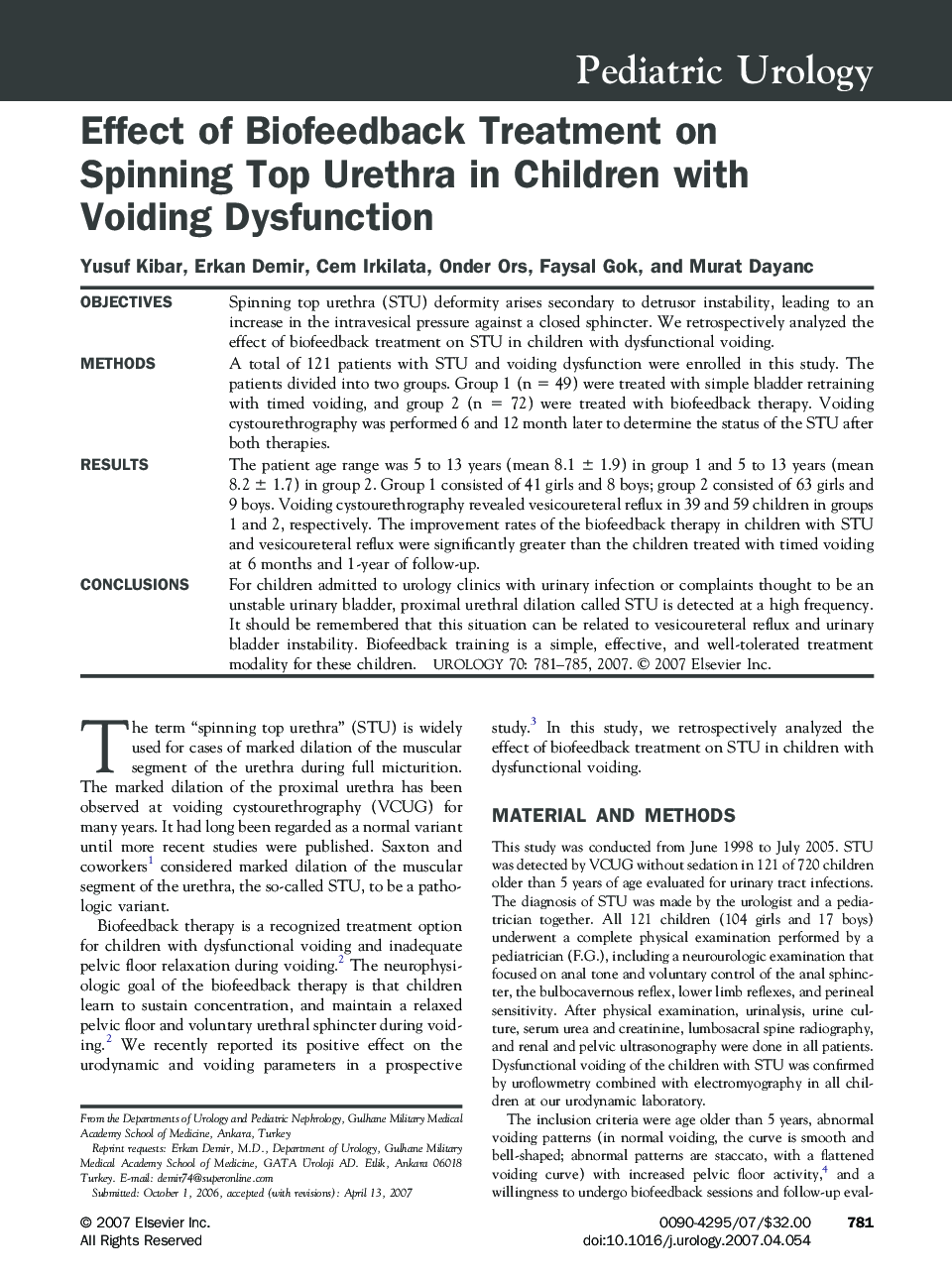| Article ID | Journal | Published Year | Pages | File Type |
|---|---|---|---|---|
| 3904578 | Urology | 2007 | 4 Pages |
ObjectivesSpinning top urethra (STU) deformity arises secondary to detrusor instability, leading to an increase in the intravesical pressure against a closed sphincter. We retrospectively analyzed the effect of biofeedback treatment on STU in children with dysfunctional voiding.MethodsA total of 121 patients with STU and voiding dysfunction were enrolled in this study. The patients divided into two groups. Group 1 (n = 49) were treated with simple bladder retraining with timed voiding, and group 2 (n = 72) were treated with biofeedback therapy. Voiding cystourethrography was performed 6 and 12 month later to determine the status of the STU after both therapies.ResultsThe patient age range was 5 to 13 years (mean 8.1 ± 1.9) in group 1 and 5 to 13 years (mean 8.2 ± 1.7) in group 2. Group 1 consisted of 41 girls and 8 boys; group 2 consisted of 63 girls and 9 boys. Voiding cystourethrography revealed vesicoureteral reflux in 39 and 59 children in groups 1 and 2, respectively. The improvement rates of the biofeedback therapy in children with STU and vesicoureteral reflux were significantly greater than the children treated with timed voiding at 6 months and 1-year of follow-up.ConclusionsFor children admitted to urology clinics with urinary infection or complaints thought to be an unstable urinary bladder, proximal urethral dilation called STU is detected at a high frequency. It should be remembered that this situation can be related to vesicoureteral reflux and urinary bladder instability. Biofeedback training is a simple, effective, and well-tolerated treatment modality for these children.
